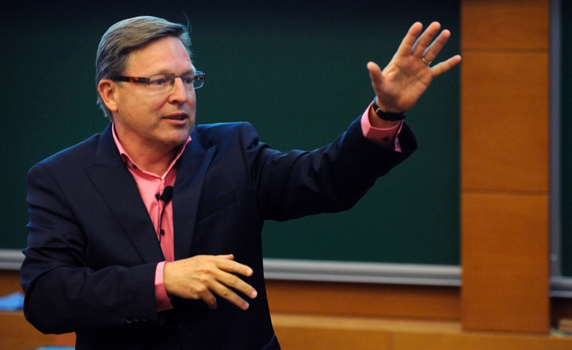
You cannot secure a loan. If you are not first, there are no opportunities. It’s disastrous if you make a mistake with your first business venture. These and other myths haunt many entrepreneurs around the world, but especially in Europe, where becoming a successful entrepreneur is thought to be almost impossible.
Verne Harnish, founder and director for 15 years of the Entrepreneurs' Organization (EO) and creator of Gazelles, an executive coaching company, debunked persistent myths in an IESE Alumni Continuous Education session focused on the entrepreneurial ecosystem.
Myth 1: Failure is a dead end
Until fairly recently, failure as an entrepreneur was perceived as negative in Europe, while in the US, it has been viewed as a way to learn from mistakes that should not be repeated in order to achieve future success.
Indeed, the perception of failure varies in different markets, but in reality, Harnish says, "nobody cares that you fail." It only becomes a problem if you refuse to accept it and let it inhibit you from undertaking new business ventures. Keep in mind that 60 percent of companies do not survive more than three years.
Myth 2: Banks don’t give loans to entrepreneurs
They never have and they will. Banks lend to companies or individuals who can prove they can repay that amount, which an entrepreneur cannot claim.
Harnish suggests that future funding is neither through banks nor family, friends or innocent people who want to invest, but by their own customers, agreements with other companies that have the resources they need, and crowdfunding. He particularly emphasized the mistake of having too much money at early stages in the venture. Liquidity is only necessary when the business model is completely defined and has already been launched. For example, Bill Gates sought to raise funds to increase the salaries of his employees only when Microsoft started to grow.
Myth 3: There are no successful entrepreneurs in Europe
The issue is not that there are none; Spain has three of the most important and richest entrepreneurs in the world, noted Harnish. But they are not visible and do not put themselves out in the public eye. Consequently, there are no models of entrepreneurs to follow. Idols are elite athletes such as Messi or Nadal.
The probability of becoming a Messi or Nadal is almost zero, while becoming a Zuckerberg is difficult but feasible. According to Harnish, successful entrepreneurs in Europe should come forward from time to time and appear in public to inspire other potential entrepreneurs.
Myth 4: Being the first to market is the key to success
Dropbox is one of the most frequently used online data storage systems today, but was it the first company to bring this type of product to market? No, it was actually among the first 20. However, this type of product is currently having great success. The reason is because it works, not because the company has invested huge amounts of money in marketing.
What matters is not being first to reach a market, but making sure your product is the one that best meets the needs of the consumer and that the tools work before you invest and take unnecessary risks.
Myth 5: Entrepreneurship is only for young people who have an IT or scientific background
There is no age limit for becoming an entrepreneur. According to the results of the study "The Anatomy of an Entrepreneur: Family Background and Motivation," published by The Kaufmann Foundation of Entrepreneurship, the average age of entrepreneurs is 39. The research results indicate that 60 percent of these are pioneers in their family, 70 percent are married when they embark on their business venture, and 60 percent already have children. In addition, almost 80 percent of entrepreneurs have been employed for over six years, 48 percent over 10 years and 11 percent more than 20. Of course, the more experienced and better prepared they are, the more likely it is that entrepreneurs will succeed.
Myth 6: Private investors seek fast results
How long do you keep shares of a company listed on the stock market? Probably not long. However, investors have to do so when the long-term forecast of a start-up is uncertain.
But not all investors are the same. Harnish explains that 80 percent of business angels spend an average of five to 10 years as shareholders of a company and their priority is to recover the initial investment. The benefits will come eventually.
Myth 7: An "A Team" guarantees success
If your idea is bad it will not work, even with an incredibly good team. As John Mullins explains in his book "Getting to Plan B", the steps to take are: first, analyze the business at the micro-and macro levels, then see if the opportunity is attractive, and finally, work to create a good team. These steps should not be done in reverse order.
 |